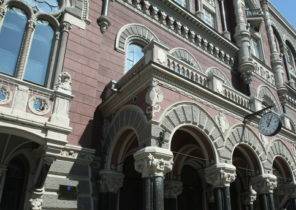
Memories of the war era is probably in almost every German house. These are things that during the Second world war in one way or another have changed their owners. Artist Mary Eichhorn (Maria Eichhorn) in the framework of its project “the Institute of Roses Welland” has set itself the task to explore the “robbery of the Jewish population of Europe and its consequences down to the present time” and to publish the relevant documents. So, she called on the public to share information about objects, including information about real estate, which presumably was taken by the Nazis from Eastern Europe, and to pass these objects to her “Institute”. All this information will, in her words, documented, research has been conducted, their results will be discussed in detail, resulting in will be possible even some kind of restitution. Information gathering will last until 17 September to this day the headquarters of the Institute will be in “New gallery” in Kassel.
How to consider this plan as of swerable or artistic provocation? So, the ad hoc working group composed of 17 people, and 30 experts from the “outside” during the two years examined a collection of known art collector Cornelius Gurlitt (Corlenius Gurlitt) and, after reviewing 499 paintings, came to the conclusion that there are suspicions of the “Nazis” in the export of art objects from the territory of other countries. In respect of eleven of the paintings were in need of special examination to establish their origin. However, a few of the paintings became the objects of restitution. Thus, it can be stated that the establishment of the origin of art is the procedure is quite complicated, with many legal technicalities and requires a high level of professionalism of those conducting it.
It is beneficial to many
So maybe the project Mary Eichhorn dedicated to something else: just to let people know that many benefited from the expropriation of the Jewish population. Not only the Nazi “bosses”, large corporations and the German museums, but also ordinary Germans, their shelters were destroyed during the bombing and who had to find a new situation in the furniture warehouses, or bibliophiles, who has the opportunity to replenish their book collections. And if you say that a great multitude of objects of everyday life has also changed owners, it can be stated that the topic of “Nazi expropriation” of property applies to almost every German. But because of this, it becomes difficult to join the General indignation, and hastily made moral evaluations, such as, for example, in the “Gurlitt”.
If the project Eichhorn aims to appeal to rethink, we have to wonder why in this context it is also about the “expropriation” of property other population groups, particularly in Eastern Europe and the Soviet Union. The war against the Soviet Union was originally planned as predatory and devastating. Slavs were considered in Nazi Germany, second-class citizens, the destruction of which although not specifically planned, but expected. The fact that during the war killed more than ten million Soviet civilians, speaks for itself. With regard to the cultural values of this region, no one in Germany not for a moment doubted that they, like minerals on the territory of the USSR unconditionally belonged to the Third Reich.
However, you cannot call a coincidence that the expropriation of the property of the inhabitants of the occupied countries of Eastern Europe in the work of the “Institute Rose Valland” plays only a minor role. This is more in line with public perception of the looting of art by the Nazis, developed largely since 1990-ies. In the conceptual sense, there is a distinct difference between “stolen Nazi art”, “trophy art” and “displaced in war art objects” because objects unlawfully changed owners during the war, are perceived differently. The first concept — presumably because it was required procedure for establishing the origin of certain items was further refined and expanded at the expense of “cultural values, especially being in the possession of the Jews, expropriated because of persecution by the Nazis.”
The concept of “trophy art” has a different story. This term, in General, represent the German cultural valuables taken away after the war with Germany on the territory of the Soviet Union. When in the early 1990-ies Russia held negotiations on how to proceed with these works of art, for diplomatic reasons, a new concept: sounding accusatory tone in “trophy art” has turned into “displaced in the war of cultural values.” This term applies to the loss of both countries.
The difference in points of view
The negotiations were interrupted in 1997. While the Russian side insisted that the German displaced values are “fair compensation” for the damage caused to the Soviet Union during the war, Germany dominated the legal point of view on this issue. From the point of view of the Germans, the historical context is farther pushed into the background, and the focus was on the contradiction of the displacement values of the international legal norms. The difference in points of view is obvious: in Germany, almost entirely talking about the German losses are increasing again briefly referred to as “trophy art”.
The fact that the movement of art from the Soviet Union and the destruction of local values fell out of sight of the Germans, was partly also connected with the fact that the study focused on the organized at the state level “weaning” of art objects. That was taken from the USSR, the Germans, in particular, representatives of the “society for the study of ancient German history and heritage of ancestors”, could at least partly understand, from the point of view of the so-called “transfer of archives”. It is also proven that some of these values became after 1945, the subject of restitution. So even the experts are of the opinion that in the German collections there are no more pieces of art, copies from the archives and libraries of the former Soviet Union. That is to say that the problem resolved itself. In fact, it is, however, marginalized, and at once on two levels. On the one hand, in purely conceptual terms, because the objects of the category of “displaced by war” means not stolen, but as “just” moved after the war, and this applies to all participants in the war. On the other hand, the actual level because it is argued that there are no more objects that need to be discovered.
Gold and furs for tobacco and bread
However, both of these arguments are convincing only with reservations. Yes, on the one hand, in Germany, probably no more major collections from Eastern Europe, although occasionally found, usually in private ownership — the objects of Russian, Ukrainian or Polish descent, offered for sale. However against them there is a doubt whether they can be considered “displaced by war”. In most cases we are talking about a personal assignment, the former is possible only in the framework of the specifics of warfare on the Eastern front, including in conditions of deprivation of rights of possession, death from starvation and robbery of the civilian population.
In late summer 1942, orders were issued prescribing “the soldiers of the Wehrmacht, returning to the Third Reich, to carry so much food, tobacco and alcohol as they can take it with you”. Officially, the looting was, of course, forbidden, but at the same time, the troops had to provide for their needs, and they were given the right to confiscate the property of the local population. Thus, the soldiers had a certain “space”, and they used it. Along with food and clothing, there was interest in everything that could be called “Souvenirs”. Often these items were exchanged for money, bread or cigarettes. The invaders saw it as a legal way of acquiring those “items” even if they used the plight of the local population and assigned appropriate prices.
So, Lydia Osipova in his “Diary of collaborationists with” surprise and disgust, talked about petty theft committed by soldiers brylawski in apartments and who picked all that they there found. “Very often they buy gold and furs, in exchange for tobacco and bread. So for the coat give two loaves of bread and a pack of cigarettes. But they pay for it. Sometimes it’s funny how eagerly they rush into some stuff. Here it is — rich in Europe, it’s just unbelievable.” However, the irony of this story should not mislead: in the winter of 1941-1942, in Pushkin (near Leningrad) exchange of personal property of bread was the last chance to avoid starvation. However, in the Pushkin died of starvation not less than ten thousand inhabitants.
Along with the “weaning” of household items and trade took place, of course, and large-scale looting. Thus, the command of army Group “North” in December 1941, was informed that “in the future the wheels of the carts, sleds, fences or a wooden house (in whole or in part) will not be allowed to export to the Motherland”. For example, said that one Church in Peterhof Wehrmacht soldiers massacred and took the whole iconostasis. A man named Achtermann, head of transportation command, loaded in a truck and taken to Germany “Florentine mosaic” from the Amber room. A unique find was discovered in 1997 in Bremen, when his son Achtermann tried to sell it. A very valuable icon of the virgin Mary of Pskov, which in 2000 within the framework of restitution were returned to Russia, was for many years in the possession of a simple German family from Berchtesgaden. Apparently, immediately after the occupation of Pskov the icon was stolen from the local Museum.
However, most of the objects returned in the past years in Russia, was less significant. According to family legend, husbands, fathers and grandfathers saved them from the burning houses or flooded cellars. Perhaps in many cases it was alleged merely to assuage the guilt of former participants in the war. However, we must remember that during the war, destroyed museums, churches and castles, as a result, art objects, books and archives are often just lying on the streets and was protected by nobody. Therefore, in many cases the soldiers, taking away these items yourself, in fact, saved them from destruction. However, the final salvation can only be a decision on return of these items at home.
Later awareness
To realize this in recent years, comes a growing number of people who received these “rescued” objects of art inherited. So, in 2014, one a resident of Hamburg gave the Annunciation icon with a dedication to personally to the Queen Maria Feodorovna, Palace Museum of Gatchina. The widow of the painter Otto Hofmann. in the same year decided to return a collection of photographs of the Royal family, which her husband at the time took it with him. The Palace Museum at Tsarskoye Selo at the exhibition dedicated to the 70th anniversary of the end of the war, showed a number of small objects returned and private photos owned by former German soldiers.
Assuming that in the fighting on the Eastern front involved up to ten million German soldiers, it is possible to calculate to what extent and how different ways of art “changed owners” without regard to “organized” at the state level of the displacement values. So there is good reason to reflect on the theme of the looting of the Eastern peoples more thoroughly than has been done hitherto, and to accordingly assess all sorts of family “Souvenirs” and “relics”.
Here is a pertinent question on whether the division of concepts “stolen Nazi art” and “art works displaced by the war” or is it nothing more than an excuse to keep a handy stereotypes, which also fuelled discriminatory perception of the Nazi ideology about the inferiority of Eastern European art and culture. If the cultural project of Mary Eichhorn will be able to develop thinking in this direction, he may be able to meet the stated claims to “actively promote education regarding long injustice” and ultimately to raise the problem that “the public is still not understood fully”.







